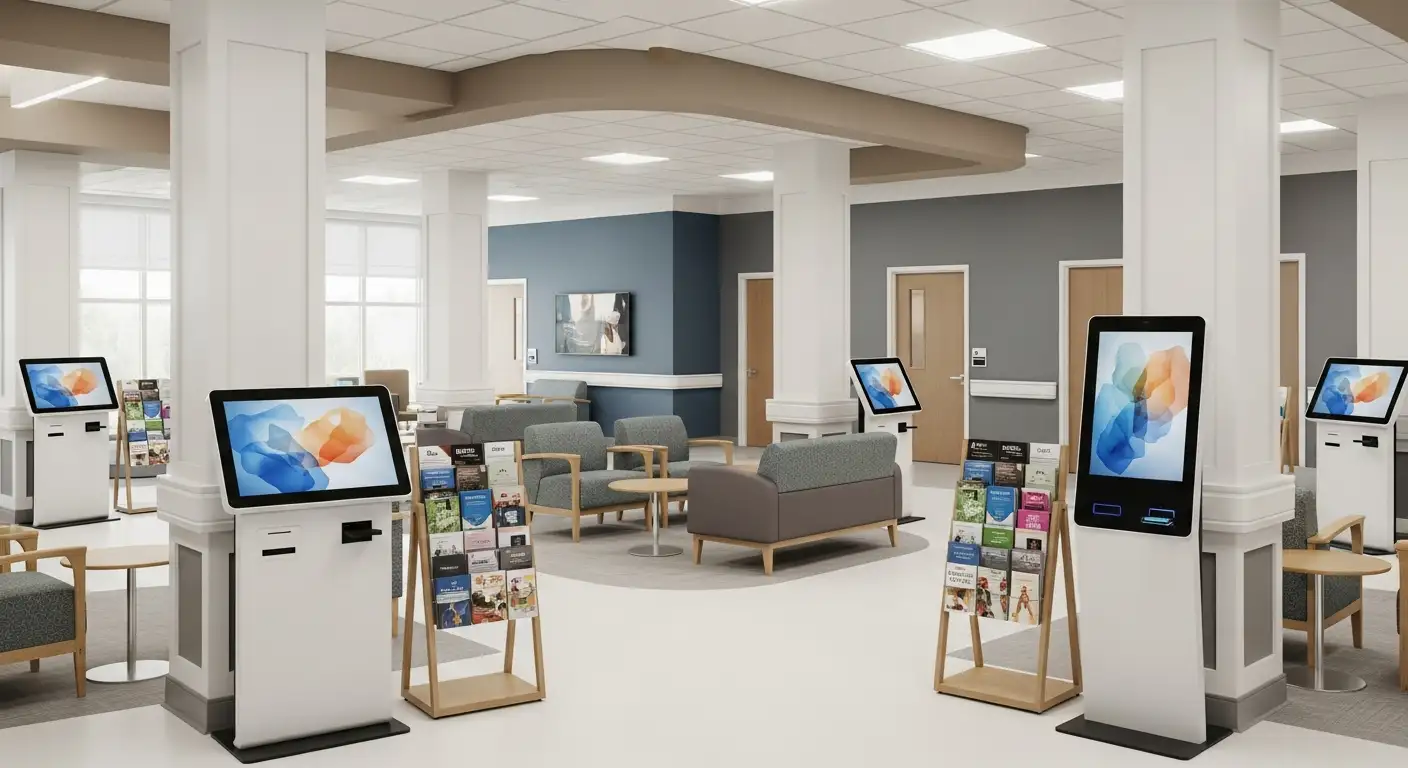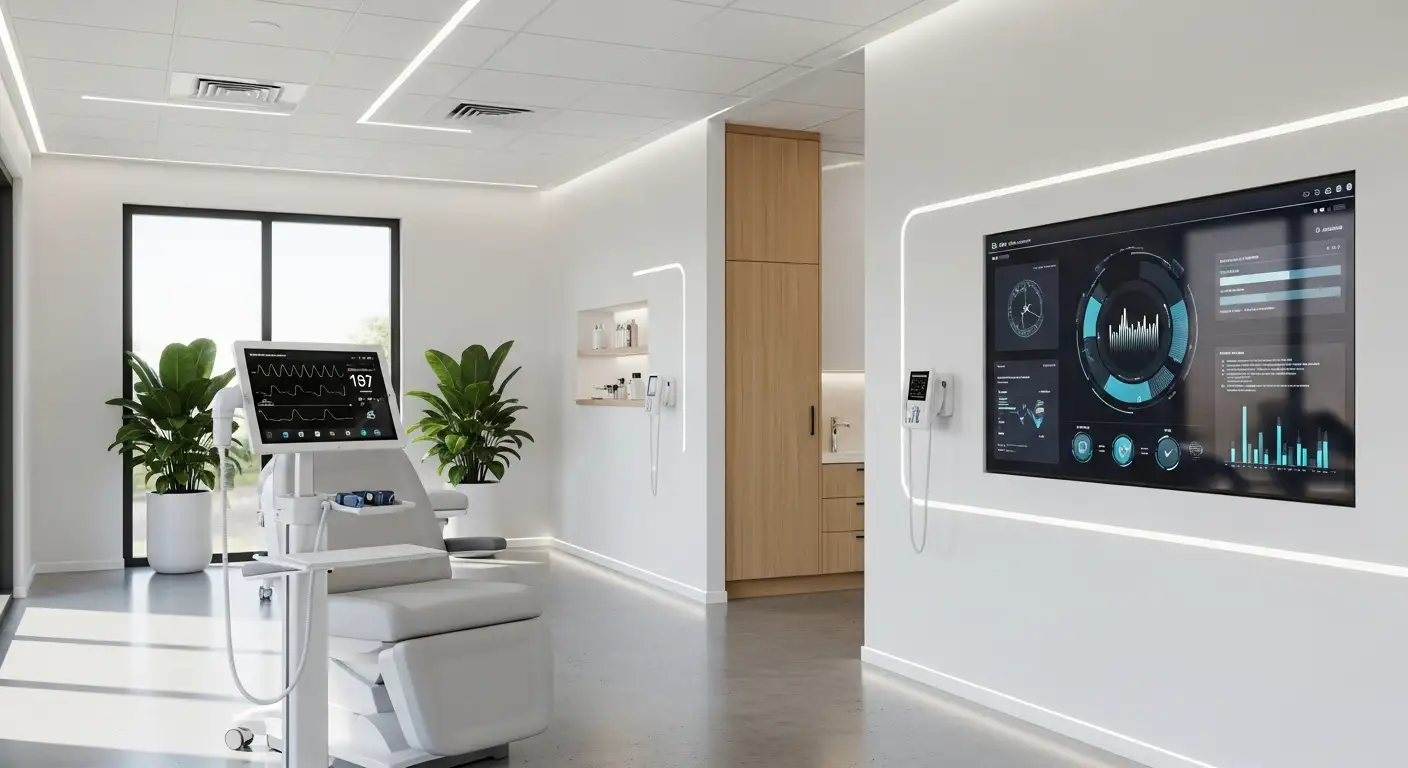VitalTrak Helped Me Build Consistent Habits at Age 65

Embracing the Journey to Longevity at 65
As we age, maintaining health and wellness becomes a vital part of living a fulfilling and active life. For many seniors, developing and sustaining consistent health habits is essential for longevity, independence, and overall quality of life. In recent years, technology-driven tools like VitalTrak have emerged as invaluable aids, helping older adults embed healthy behaviors into their daily routines. This article explores how habits influence aging, the role of digital solutions, and inspiring success stories from seniors who have transformed their lives at 65.
Foundations of Healthy Aging: Key Habits for Longevity

What are effective health habits for promoting longevity and healthy aging in older adults?
Adopting consistent healthy habits can greatly influence how gracefully and long one ages. Central to this is maintaining a balanced, plant-centric diet, such as the Mediterranean or Okinawan diets. These eating patterns emphasize fruits, vegetables, whole grains, healthy fats like olive oil, and lean proteins, supporting cardiovascular health and boosting the immune system.
Regular physical activity is equally important. Combining aerobic exercises like walking or swimming with strength training, flexibility routines, and balance exercises can help maintain muscle mass, improve bone density, and lower fall risk. Regular activity not only fosters physical robustness but also enhances mental well-being.
Social interaction also plays a pivotal role. Staying connected with family, friends, and community helps preserve emotional health, reduces feelings of loneliness, and supports cognitive function. Engaging in social activities or volunteering can provide a sense of purpose and fulfillment.
Lastly, prioritizing sleep, managing stress through mindfulness or laughter, avoiding harmful substances like tobacco and excessive alcohol, and scheduling routine health check-ups contribute significantly to healthy aging. Early adoption of these habits can improve quality of life and extend lifespan, making aging a more vibrant and fulfilling period.
The Role of Technology in Supporting Older Adults’ Health Routines
How can technology support older adults in developing and maintaining health routines?
Technology plays a crucial role in helping older adults create and stick to healthy habits. Wearables like fitness trackers and mobile health apps allow seniors to monitor their activity levels, sleep patterns, and other health indicators easily. These tools enable users to set personalized goals and receive instant feedback, making it easier to stay motivated.
Features such as reminders, goal-setting functions, and timely prompts are especially helpful. For example, apps can send alerts to encourage walking or remind to take medication, reinforcing consistent habits. These cues serve as external triggers that remind users to perform specific health behaviors at the right times.
Designing technology to be easy to use and accessible is essential for seniors. Clear interfaces, large buttons, and simple instructions reduce frustration and make health management straightforward. Affordability and easy setup also contribute to sustained use.
Behavioral techniques integrated into these tools include action planning—helping seniors develop specific plans for engaging in health activities—and positive reinforcement, such as encouraging messages after completing a routine. These strategies boost confidence and promote continued engagement.
Building trust in technology and recognizing its usefulness are vital factors. When older adults believe these tools are reliable and necessary, they are more likely to adopt and keep using them. Support from healthcare providers, social networks, and government initiatives further encourages adoption.
In summary, user-friendly digital tools that combine behavioral techniques with social and organizational support can effectively promote healthier, more consistent routines for older adults.
When Do Health Habits Stabilize, and Why It Matters
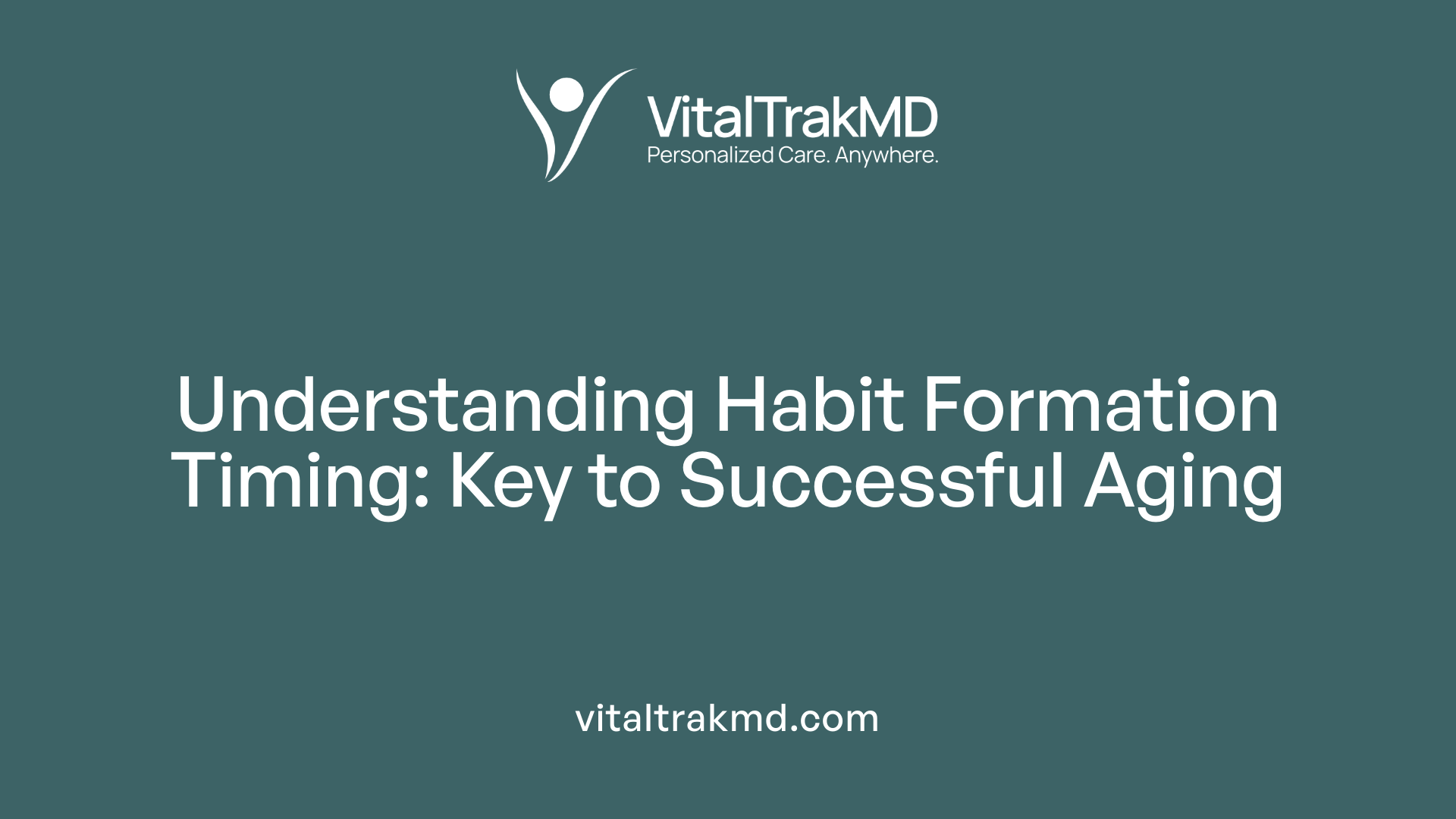
Typical ages for habit formation and stabilization
Health habits generally start to become firm during young adulthood, roughly between the ages of 18 and 25. During this period, individuals often establish routines related to diet, exercise, sleep, and other health-related behaviors. These habits can set the foundation for long-term health and well-being.
Impact of early habit development on long-term health
Developing positive health behaviors early in life can substantially influence aging. Consistent physical activity, healthy eating, and avoidance of harmful substances like tobacco and excessive alcohol can reduce the risk of chronic diseases such as heart disease, diabetes, and cognitive decline later on.
Reinforcing healthy behaviors later in life
While habits tend to stabilize in early adulthood, it’s never too late to improve or develop new healthy routines. Especially after age 65, adopting or reinforcing behaviors like regular exercise, a balanced diet (such as Mediterranean or DASH), good sleep hygiene, and social engagement can significantly enhance quality of life.
Benefits of adopting habits at age 65 and beyond
Starting healthy habits at 65 or older can help manage age-related health issues, maintain mobility, support mental health, and foster independence. These positive changes contribute to better health span and longevity, demonstrating that proactive health choices are valuable at any stage of life.
| Age Range | Typical Habit Status | Benefits | Additional Notes |
|---|---|---|---|
| 18-25 | Habits begin to solidify | Long-term health foundation | Critical period for setting routines |
| 30-50 | Habit reinforcement | Chronic disease prevention | Adjusting habits for better aging |
| 65+ | Reinforcing/enhancing habits | Improved quality of life & independence | Adaptation and maintenance are possible at any age |
Stability in health behaviors influences aging by promoting resilience and reducing health risks. While early adulthood is crucial for foundation-setting, efforts to establish or strengthen habits later can still produce meaningful health benefits.
Strategies for Establishing Resilient Habits at 65 and Beyond
As individuals reach retirement age and beyond, cultivating resilient habits becomes essential for maintaining health and personal growth. Effective strategies focus on creating consistent cues that naturally trigger desired behaviors. For example, placing fitness shoes by the door encourages regular movement, turning action into a routine.
Another useful approach is habit stacking, where new activities are linked to established routines. For instance, adding a brief stretching session after brushing teeth helps integrate physical activity effortlessly.
Setting SMART goals—Specific, Measurable, Achievable, Relevant, and Time-bound—keeps intentions clear and progress trackable. Making activities enjoyable, such as listening to favorite music during exercise or engaging in social hobbies, boosts motivation and reinforces positive feelings.
Support plays a vital role; regular check-ins with healthcare providers, involvement from family, or community participation can motivate seniors and provide accountability. Positive self-talk and celebrating small victories strengthen commitment.
Patience is crucial. Implementing gradual changes, allowing time to adapt, and periodically re-evaluating routines help embed habits sustainably. This approach ensures resilience in habits, fostering ongoing physical and mental wellness.
In summary, combining consistent cues, linking routines, goal setting, enjoyable activities, support networks, and patience create a robust framework for seniors to develop and maintain healthy habits that last a lifetime.
Real-Life Outcomes and Testimonials: How VitalTrak Empowers Seniors
 Many seniors using VitalTrak and similar habit-building tools have shared inspiring success stories. These apps are designed to help users establish consistent routines in various aspects of health and wellness.
Many seniors using VitalTrak and similar habit-building tools have shared inspiring success stories. These apps are designed to help users establish consistent routines in various aspects of health and wellness.
A common area of benefit is medication management. Seniors report that VitalTrak helps remind them to take their medications on time, reducing missed doses and improving health outcomes. Nutrition and exercise tracking also become easier, encouraging healthier eating habits and regular physical activity.
Throughout their testimonials, many seniors mention experiencing notable improvements in their overall health and energy levels. This boost often results in feeling more capable and resilient in managing chronic conditions, which can significantly enhance daily life.
In addition to tangible health gains, users frequently cite increased motivation and confidence. By actively engaging with their health routines through VitalTrak, seniors often feel more in control and optimistic about aging gracefully.
These positive experiences highlight how digital tools like VitalTrak can foster healthier habits, improve quality of life, and support seniors in maintaining independence. Overall, the feedback underscores the value of such technology in empowering older adults and promoting healthy aging.
Integrating Healthy Habits into Daily Life for Holistic Well-being
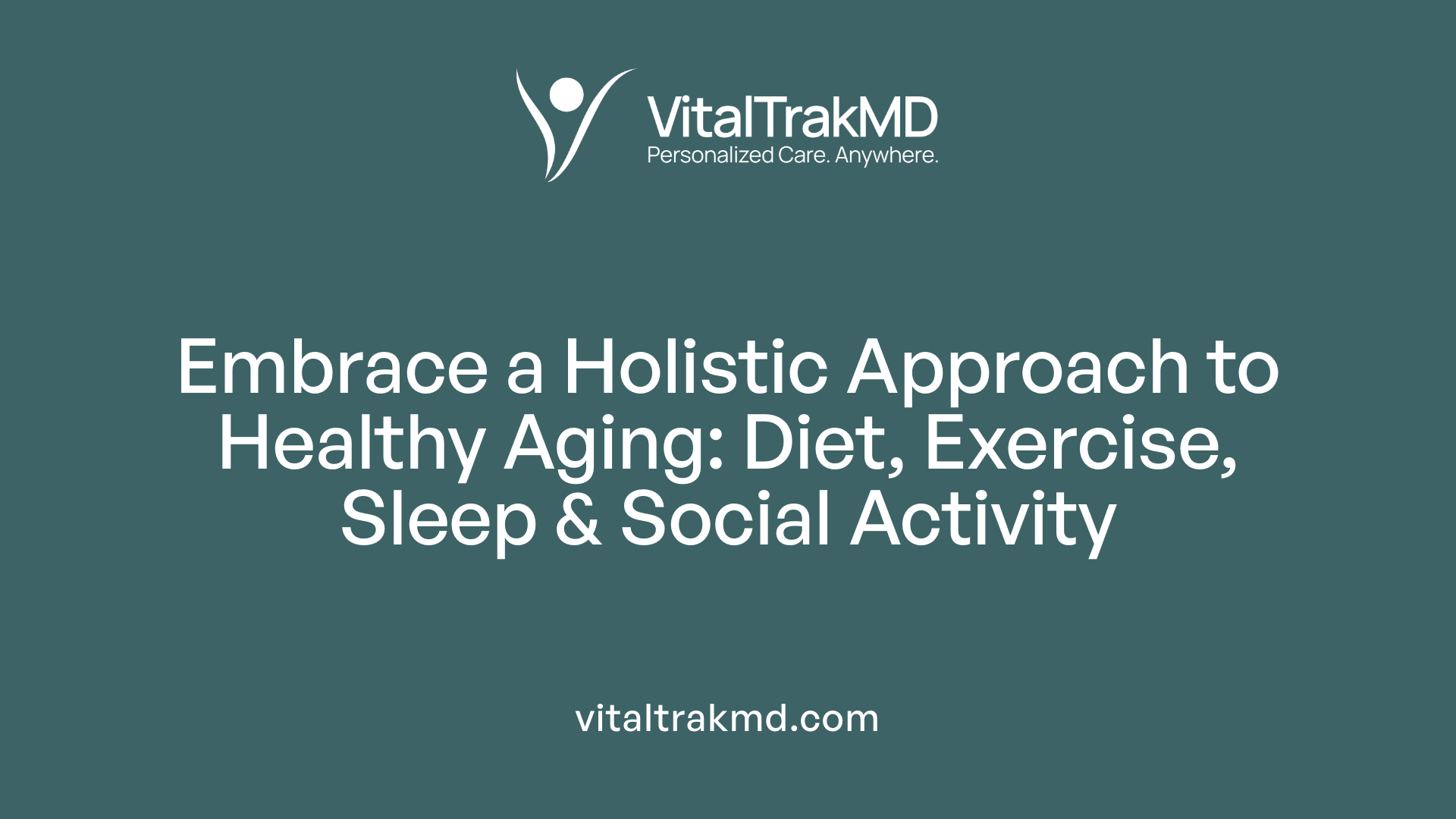
Combining diet, exercise, sleep, and social activities
Achieving holistic well-being involves a balanced approach to various aspects of daily life. Healthy eating provides essential nutrients that fuel the body and mind. Regular physical activity not only improves cardiovascular health but also boosts mood and energy levels. Adequate sleep is vital for recovery, mental clarity, and emotional stability. Social interactions foster a sense of belonging and reduce feelings of loneliness.
Incorporating these elements into a daily routine creates a synergy that supports overall health. For example, planning nutritious meals alongside scheduled exercise and social activities ensures a well-rounded approach to wellness.
Creating enjoyable routines
To maintain consistency, it’s important to develop routines that are both effective and enjoyable. Choosing activities that you find pleasurable—such as dancing, walking in nature, or cooking favorite healthy recipes—can make routine health habits feel less like chores.
Setting small, achievable goals helps build confidence and encourages continued participation. Over time, these routines become ingrained habits, seamlessly integrating health-promoting behaviors into everyday life.
Practicing consistency and mindfulness
Consistency is crucial for long-term benefits. Establishing regular mealtimes, exercise schedules, and sleep routines helps reinforce healthy habits. Mindfulness, or paying conscious attention to your body and mind, enhances the effectiveness of these habits.
Mindful eating, for example, promotes better digestion and satisfaction, while mindful movement increases awareness of physical comfort and limits.
Monitoring progress and making adjustments
Regularly tracking your activities and health markers helps identify what works best. Using journals, apps, or checklists can provide motivation and insight.
Flexibility is equally important. As your needs evolve, adjusting routines ensures sustained progress. Whether it’s trying new types of exercise, changing meal plans, or modifying sleep schedules, adaptive strategies support long-term holistic health.
| Aspect | Strategy | Benefits | Additional Notes |
|---|---|---|---|
| Diet | Balanced nutrition plan | Supports energy, immunity, and overall health | Incorporate colorful fruits and vegetables, lean proteins |
| Exercise | Regular physical activity | Improves mood, strength, and cardiovascular health | Find activities you enjoy to promote consistency |
| Sleep | Consistent sleep schedule | Enhances memory, mood, and recovery | Aim for 7-9 hours of quality sleep |
| Social Life | Engage in social activities | Reduces stress, boosts happiness | Connect regularly with friends and community |
By blending these elements carefully and mindfully, individuals can foster a lifestyle that promotes longevity and vitality, aligned with holistic approaches to healthy aging.
Building a Supportive Environment for Lifelong Wellness
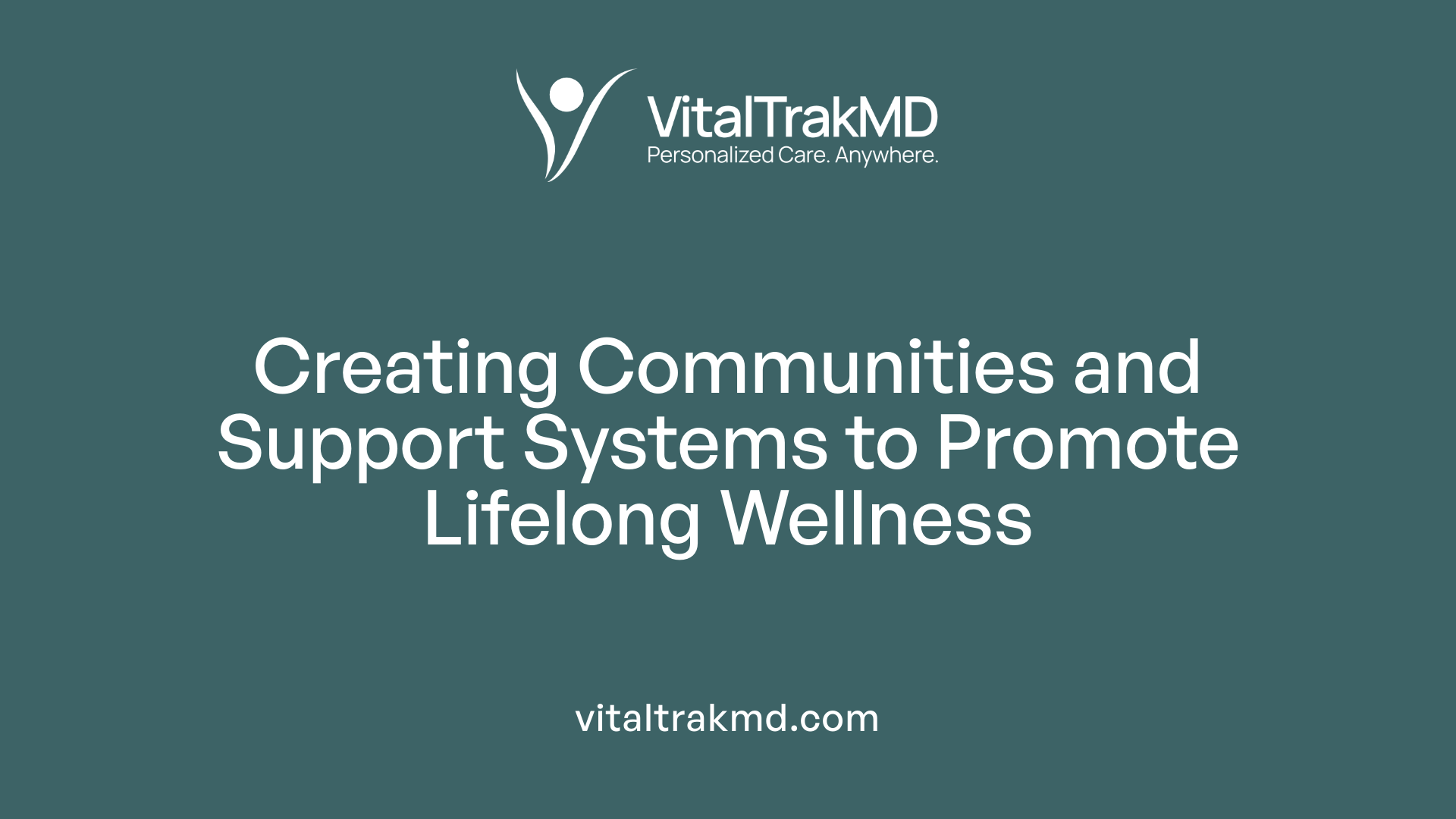 Creating an environment that promotes lifelong wellness requires a combined effort from families, communities, healthcare providers, and government agencies. When families and local communities actively participate, they can foster supportive networks that encourage healthy habits and emotional well-being.
Creating an environment that promotes lifelong wellness requires a combined effort from families, communities, healthcare providers, and government agencies. When families and local communities actively participate, they can foster supportive networks that encourage healthy habits and emotional well-being.
Healthcare providers play a vital role by offering preventive care, regular screenings, and health education tailored to different age groups. Their ongoing support helps individuals maintain independence and manage chronic conditions effectively.
Organizational and governmental health initiatives are essential to build a framework that supports aging populations. These initiatives include public health campaigns, policies for accessible healthcare facilities, and programs aimed at reducing health disparities.
Fostering social connections is another critical element. Strong social ties help prevent loneliness, which is linked to poorer health outcomes among older adults. Community centers, social groups, and technology platforms can facilitate these connections and promote active, social engagement.
Bringing these components together creates a safety net that encourages healthy behaviors and emotional resilience throughout life. Encouraging collaboration at all levels helps cultivate a vibrant, supportive environment essential for lifelong wellness.
Empowering Seniors for a Healthier Future
Adopting healthy habits and leveraging innovative tools like VitalTrak can significantly enhance the quality of life for seniors at 65 and beyond. By understanding the science behind habit formation and the supportive role of technology, older adults can confidently maintain routines that promote longevity and well-being. The journey to healthy aging is ongoing, but with the right strategies, support networks, and digital assistance, seniors can age gracefully, healthfully, and happily.
References
- What Do We Know About Healthy Aging?
- Healthy Aging at Any Age - CDC
- Aging: What to expect - Mayo Clinic
- Aging: incorporating healthy habits for improved longevity - UAB News
- It's Never Too Late: Five Healthy Steps at Any Age
- Habit Formation in Wearable Activity Tracker Use Among Older Adults
- Understanding Older Adults' Experiences With Technologies for ...
- Digital Behavior Change Intervention Designs for Habit Formation
- The role of trust and habit in the adoption of mHealth by older adults ...
Recent articles
Want to Feel Better and Live Healthier?
Join hundreds of patients taking control of their health with personalized care that fits their life – not the other way around.
Rated 4.8/5 by 32+ customers



